Reb MacRath's Blog, page 16
April 30, 2015
Shopping for a Second Draft
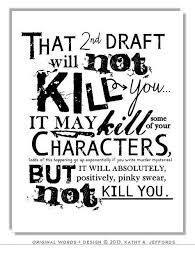
So, after two months' work, I'd succeed in writing and typing a 49,000-word first draft of my work in progress. Now, my first drafts are miserable things, so bad they can't be shown. But in the old days, before computers, I'd type draft after draft without tears because there was no other way. By the third draft, I'd begin to see potential and feel charged. By the fourth draft, generally, I'd have a reader's copy half-covered with white-out and corrector tape.
Times have changed, of course. But I still have the need for a hard copy of the second draft. I need to see it...divide it into stacks so that I can monitor the pacing...highlight it and mark it up,...see neat pages of typed gibberish transformed into scribbles on scribbles and color-coded markings.
So, today I went shopping. Since I'll often be working before and after work, an hour here and an hour there, I really had to strategize. Here were the weapons I set out to buy:
1) Side-opening storage clipboard, capable of holding 10-15 pages, my goal being to revise 3-5 pp daily.

There's a pen/pencil storage section and the plastic construction is sturdy enough to slip the thing into my back pack.
2) Sharpie, 3-line-width highlighters: one width for deleting lines, another for working in a tighter space, and the tip for writing coded notes. I can see at a glance which section needs research, which concerns a certain character, etc.
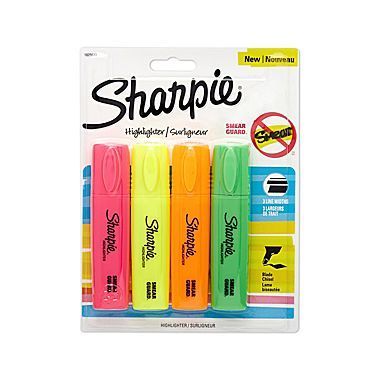
3) A 4-pack of reporters notebooks. Ideal for notes or transcribed research that I can clip onto particular pages, to be added when I type.
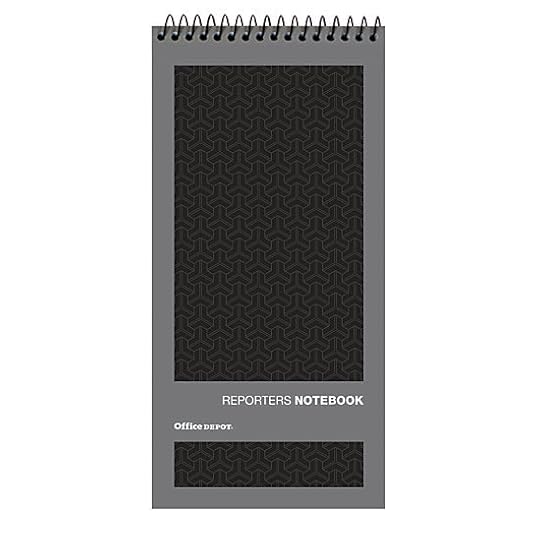
4) More of my favorite mechanical pencils:
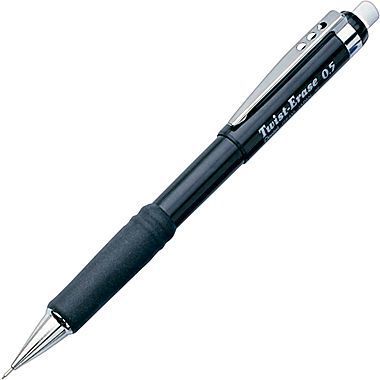
I know, I know. Most folks would be far more excited with a bagful of electronic toys and gadgets. But I began to rock today on the second draft with my little bagful of tricks.
By June I'll learn what other toys will be required for draft 3!
Published on April 30, 2015 05:30
April 20, 2015
I've Got a Crush on My New Mouse: Part 1
Last week, sick to the crash and burn point of frayed or tangled mouse cords, I bought a good-quality optical mouse.
[image error]
And within a couple of minutes I knew I'd made a sound investment.
--Convenience: the micro receiver remains lodged in my laptop's USB port. Or it can be stored beside the battery in back.
--Sturdiness: nothing flimsy about the mouse. Solidly built--compared to discount plug-ins that broke whenever dropped...or looked at the wrong way.
--Quality: remember the old ad jingle: 'A little dab'll do you'? Well, a single click with this will pull up any link. Writing and editing functions are also much simpler and quicker: highlighting, cut and pasting, scrolling, navigation...No double or triple clicks required, no stubborn refusals to scroll on TweetDeck..
--Speed: by my count, my online working time has been cut in almost half. From 2 hours each morning to 1, with followups later each day.
My mind has been running with this all week long. Where else have I paid too much for saving a couple of dollars? Where else I have stopped way short of exploring superior options?
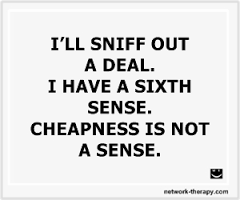
I worked, for example, for too many years at a low-level job. You all know the kind I mean--the sort that leads to signs like this:
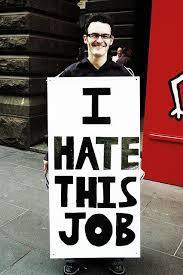
I had no end of excuses. The job gave me time for my writing.,..At my age I couldn't find anything else...I'd done the job so long it had become my 'expertise'...Etc.
But with a shift of perspective and a healthy shot of gall, I set out to whip my excuses. And within 2 weeks, I had a better paying job in a better part of town--and a dreamy schedule that allows me time to write.
This week I'll conduct a thorough inner search, on the hunt for other areas where my vision's fallen short...or where I've settled for less.
And Babycakes, the optical mouse, will get to conduct the review in Part 2.

[image error]
And within a couple of minutes I knew I'd made a sound investment.
--Convenience: the micro receiver remains lodged in my laptop's USB port. Or it can be stored beside the battery in back.
--Sturdiness: nothing flimsy about the mouse. Solidly built--compared to discount plug-ins that broke whenever dropped...or looked at the wrong way.
--Quality: remember the old ad jingle: 'A little dab'll do you'? Well, a single click with this will pull up any link. Writing and editing functions are also much simpler and quicker: highlighting, cut and pasting, scrolling, navigation...No double or triple clicks required, no stubborn refusals to scroll on TweetDeck..
--Speed: by my count, my online working time has been cut in almost half. From 2 hours each morning to 1, with followups later each day.
My mind has been running with this all week long. Where else have I paid too much for saving a couple of dollars? Where else I have stopped way short of exploring superior options?

I worked, for example, for too many years at a low-level job. You all know the kind I mean--the sort that leads to signs like this:

I had no end of excuses. The job gave me time for my writing.,..At my age I couldn't find anything else...I'd done the job so long it had become my 'expertise'...Etc.
But with a shift of perspective and a healthy shot of gall, I set out to whip my excuses. And within 2 weeks, I had a better paying job in a better part of town--and a dreamy schedule that allows me time to write.
This week I'll conduct a thorough inner search, on the hunt for other areas where my vision's fallen short...or where I've settled for less.
And Babycakes, the optical mouse, will get to conduct the review in Part 2.

Published on April 20, 2015 05:30
April 12, 2015
Beat the Clock or Beat the Bank

With a new job beginning on 4/13, I face a new challenge--one requiring some entirely different strategies.
The last six years, spent working third-shift in Charlotte and then part-time in Seattle for a major retail chain--offered, if you will, a sort of reverse challenge. I had plenty of time to write, working 7 nights on and seven off, then just 20 hours a week--but I was only scraping by while working a second job in Charlotte. So the old game was Beat the Bank.

Tough, but in Seattle I could easily write, spend time on social media and work out on five times a week while just getting by.
But the loss of the job that I hated compelled me to get into gear. Within two weeks I'd found a full-time job at a much better salary. I am grateful. I bless my stars. And I look forward to working days, not second or third shift. But the game of Beat the Clock begins on Monday, 4/13.
Severe adjustments must be made if nothing is to go. Basic schedule:
8-5 with one day off during the week, plus Sunday.
Saturday: 9-1.

That's a respectable schedule. But one of two choices will have to be made. On my weekday shifts, I can get up at 4:30 a.m. and:
1) Hit the gym from 5:00-6:00 a.m., leaving time to shower and bus to work. Write after work.
2) Reach a cafe near the workplace by 5:15-5:30 a.m. latest, for a two-hour writing session. Hit the gym after work, then tea and social media.
I believe I'll start with #3 and see how it goes.
Either way, on nights before work days I'll need to get plenty of sleep.
Published on April 12, 2015 07:30
March 31, 2015
Blood and Rue: A Ripsnorting Round Table Chat
Seated here today are six successful, well-respected authors who've gathered to discuss the subject of violence in film and fiction. In alphabetical order:
Russell Blake
The New York Times and USA Today bestselling author of over 35 adventure thriller novels also co-authored two books with Clive Cussler. He lives in Mexico with his dogs and a bad attitude.
Claude Bouchard
Completed his studies at McGill University and worked in management for countless years. From there, it was a logical career step to stay home and write crime thrillers.
Bill Kirton
Lecturer, actor, director, playwright, novelist, husband, father, grandfather. Sails, eats, drinks wine, gardens. Writes whydunnits and whodunnits. Thinks laughter is very important.
John Logan
The author of 6 novels has published stories worldwide in anthologies by Picador and Vintage, also appearing in the Edinburgh Review and other journals. A proud Highlander.
Richard Monaco
The two-time Pulitzer Prize-nominee has worn quite a few hats: novelist, poet, textbook author, teacher and editor. Co-founded the Adele Leone Literary Agency.
Brad Strickland
Recently retired from a career as a University professor. Also known as Ken McKea, writer of the series of hardboiled Florida mysteries featuring Jim Dallas.
******
1) Each of you has featured violence in your fiction. What are your personal guidelines for how graphic you're willing to get?
BLAKE
Depends on the aesthetic I’m after. As an example, picture a lion chasing down a gazelle. I can leave it at the animal bringing down its prey, or have gnashing teeth, panic, blood, sinew, and gore all over the page – whether I do or not is determined by what I’m trying to accomplish.
I let the story determine the violence. There are different levels I’ll write based upon how gritty the story is. As an example, in my JET series, it’s about a 5-6 on a 10 point scale – about what you’d expect watching a James Bond movie. The Assassin series, which is grittier, is more of a 7-8. Because it’s about cartels, and they’re violent in the real world, and brutal, and if you try to soften that too much the story stops being realistic. I don’t censor myself based on what some imaginary reader might find offensive. I think down that road lies madness, as there’s always going to be someone who finds anything you write offensive. When I write violence (and sex), I ask myself, does this add to the experience, is it neutral, or does it detract. Do I want to shock deliberately, or do I want a different effect? To what level of descriptiveness do I need to write in order to evoke what I want?
BOUCHARDI’ve never been a huge fan of graphic violence in film or literature, particularly when it becomes excessive for nothing and results in overkill, pardon the pun. Similarly with my writing, violent scenes include just enough information to accurately depict what takes place without going into minute detail. For example, if a victim is stabbed repeatedly, I won’t provide a blow by blow description. If required to demonstrate the severity of a violent act, I’ll do so with an ‘after the fact’ portrayal of the crime scene or via subsequent dialog. To be clear, I do write violent scenes. I simply don’t include any gore which doesn’t add to the story. As an example, consider the following:
“You want this?” I asked, raising the cane in the air, my left hand wrapped around the handle, the tip pointing at him.“Give it to me,” he insisted, taking a half-step toward me, looking for his opening to lunge with the blade.Bringing my right foot forward, I grasped the cane at its centre with my right hand and jabbed it at his face, my left arm acting like a piston and driving the tip into his right eye. He emitted a strangled, gasping gurgle as he dropped the knife and raised both hands to his face.
KIRTON
When I'm writing a scene--violent or otherwise--what happens tends to be dictated by the characters involved. In my first published crime novel there's a violent, self-harming scene. I wrote it to increase sympathy for the perpetrator/victim and throw light on some apparent contradictions in her character, It was an integral part of the plot and helped to confirm my detective's (and my own) abhorrence of violence. The form it took and the extremes it explored, though, came from the character's personality and situation. After writing it, I understood her better.
The comments of some reviewers were disturbing but interesting. One said the details were 'unnecessary' and made her 'question the writer's psyche.' Another added 'The fact that this author also writes children's books creeps me out."' That suggests there's not only a failure to separate fiction from reality, but also a worrying tendency to assume that, if we describe such acts, we're capable of actually performing them.
LOGANI’m happy to get as graphic as the context of the story justifies, or demands, with no set limits.
MONACOHonestly, words are all equivalent, it’s where you put them. Words and their resonance, metaphoric, expository, intense…are colors on a pallet. Sometimes blood red, sometimes gauzy, dark, and so on. Color me high-functioning sociopath, if you like, but it’s all the same to me: I follow the work as it unfolds; I no more control it than a surfer directs the wave he rides. So, no, I don’t have guidelines that amount to much.
STRICKLAND
I’d say to use the violence as indicative of character and situation—fit the level to the story. When extreme violence occurs, it shades into Grand Guignol—just blood for blood’s sake, and that distracts from the characters and from the points the plot may be making. I have no objection to gore, but I do resist slathering it on for page after page. That dulls the response too, I think. Death, dismemberment, torture all may be necessary for a thriller; in touchier territory, rape.
For me the line over which I will not step is the point when the action makes a reader react with outrage against me and against the story, not against the characters. I will say that killing animals gets me much more hate mail than killing people…I had a little dog hit by a car in one book, and a cat tortured and killed as a sadist waited for his human victim to show up in another, and people became very emotional about these. Still, dogs do get killed on the street, and psychopaths do kill animals—that’s part of the syndrome that is often seen in serial (human) killers, in fact. Neither story wallowed in the gore, but the violence had shock value, and that’s what the stories needed.
2) Can you give one or two examples, in either film or lit, where the violence was necessary and handled to perfection?
BLAKEPlatoon, for realistic violence that was contextually appropriate, and The Deer Hunter. As an example of how vividly the latter stays with me, even, what, thirty years after release, I still get the shivers at that first Russian roulette scene. What an impactful handling of violence to set a tone. Was it too much? Some at the time thought so. I don’t. Anything that still works thirty years later, and is still vital and immediate, is about as close to perfection as you’re going to see.
BOUCHARD
It’s funny because when I read this question, two examples immediately came to mind, causing me to inwardly smile as I clenched my teeth. The first is somewhat vague after thirty-nine years yet a vivid ‘feeling’ remains – 1976, Marathon Man, when Hoffman is tortured by Olivier… Gawd. The second was brought to us by our very own Russell Blake and is the opening scene of Fatal Exchange from which I share the last two lines:
The victim’s eye went wide as the screech of the high-pitched motor filled the space. “So, my friend, is there anything you want to tell me before we start?”
KIRTON
First, we need to be precise about what we mean by 'perfection'. It certainly doesn't mean providing a template for the most effective or exquisite way of hurting someone. It does, however, mean using it in a way that best supports an artistic or aesthetic vision.
Tarantino's Django Unchained is an uncompromising gore-fest. There's blood and bodies everywhere and it's all so graphic and excessive that, in the end, it goes beyond realism into parody. It's also funny. The KKK scene where they all complain that their hoods have been badly made, the holes are in the wrong place and they can't see properly through them is pure comedy and yet they're riding out with the intention of their victim slowly and painfully. How can we laugh at it when we know that? The underlying message is that the real, obscene violence of the concept and practice of slavery often tends to be sanitized.
And no-one who has seen Reseveroir Dogs can forget watching Michael Madsen doing his little dance to 'Stuck in the middle with you' before cutting off his prisoner's ear. It's a masterpiece of tension, distills the essence of fear and yet, when the deed has been done, there's the tension-relieving 'joke' of the character holding the ear to his lips and whispering into it.
LOGAN
I rewatched Hitchcock’s Psycho recently and was impressed by how well that famous shower scene with Janet Leigh was dealt with. The knife is shown, the blood is shown (although in black and white), but there is no point at which the knife is shown “going in” – instead, the viewer is left to imagine it, fill in the blanks. It works well. And yet that 1960 film is still tagged “one of the most shocking movies of all time”. This must be because of the skill with which Hitchcock manipulates the imagination, tapping into archetypal banks of dormant horror in the subconscious. That is where the real dramatic power comes from. A viewer can “look away” from overt gore on a screen, or in a text, but it’s much more difficult to “look away” from subconscious triggers which are being fired off artfully.
Another example from film would be William Peter Blatty’s The Ninth Configuration. There is a build-up throughout the story towards the climactic explosion of violence in a bar between “Killer Kane” played by Stacy Keach, and a biker gang.
The Stacy Keach character has repudiated his violent side so deeply that it has caused a split in his personality (much as in the film version of the Psycho story) and right up until the end of the film the viewer is only familiar with the gentle, endlessly patient “psychiatrist” played by Keach, who only wishes to help and heal others. We have witnessed numerous philosophical/spiritual conversations between Keach and the patients in the castle hospital for war vets. So we know by the end of the film that Keach/Kane will do anything, go to any length, not to be involved in further violence. Then - cue the biker gang.
A series of extreme provocations and humiliations ensue, which we see Keach resist and resist, even licking beer off the floor when ordered to…until he finally snaps. Here, the “explosion” is shown graphically, but it seems to have been earned by the previous 90 minutes of context, and the knowledge that “Kane” does not want to be doing this.
MONACOImaginary violence isn't violent. In art, myriad examples: King Lear, great war movies…on and on and on….Outside of art, news and all that becomes a filter over reality. Cops or the military blast someone, for example, you watch images and hear a lot of talk – unless you’re there in person.
Whenever there in person, my guts react, I get sick, angry, try to do something. On screen it becomes a movie. You might react high tension the first showing but it quickly turns into stock footage. Part of it is how new you are to stock violence. Kids are the best test. The first time (age 10) I saw “All Quiet on the Western Front” I almost freaked out and felt all of it in full horror mode. Nothing ever hit harder. Note this was a crude film where sound was added later. No clever tricks. I vowed to never go to war. I was sickened by those (as the Chinese term it) electric shadows. As part of the “normal” desensitizing process of adolescence, of course, I tried to enlist in the Marines and Air Force at 17. Basically they told me to come back when I was less violent and crazy. Seriously.
So, again, when reality becomes a metaphor, it’s free of the neurotic baggage I stumble around with. Like a dear Film-maker friend once told me, it is “…just about life and the need to love.” No fancy notions or techniques.
STRICKLANDFilm: In the otherwise not terribly faithful Robert Altman adaptation of Raymond Chandler’s The Long Goodbye, there’s a beaut. Gangster Marty Augustine is arguing with Philip Marlowe, and Augustine’s beautiful mistress is at the gangster’s side. After interrupting his spiel to Marlowe to praise his mistress’s beauty, out of nowhere he slams a Coca-Cola bottle into her face, shattering the bottle and lacerating her. She screams and spouts blood. Then, coolly, Augustine turns to Marlowe and says, “That’s someone I love. You, I don’t even like.” The point is made—we know how crazy Augustine is and in what peril Marlowe stands.
Literature: The cringe-making torture scene of James Bond in Fleming’s Casino Royale. Simple implements: A straw-bottomed chair with the bottom cut out; a trefoil carpet beater. But Bond is subjected to sudden blasting pain, and any guy reading it grits his teeth. The scene brilliantly illustrates Bond’s world, the people he runs against, and the dangers he faces.
3) Those who profess to hate violence in art sometimes love classics just brimming with gore: Breaking Bad, Kill Bill, The Iliad, The Odyssey...What the heck is going on?
BLAKE One’s tolerance for violence is akin to one’s tolerance for alcohol. You might hate being around drunks and frown at those around you drinking a bit too much, but you also might get hammered with some regularity. So there’s probably a lot of self-loathing and fear mixed in with the love of violence in some works, and a hatred of it in others. If you set the violence up so it’s relevant, and handled appropriately within the context of the story, you can’t go wrong, even with those who profess to hate violence (which is akin to saying you hate the world, because the world is, and always has been, violent). I grasp not wanting to wallow in violence, but the folks I've encountered that say something is too violent usually are saying that it’s too graphic for the context.
BOUCHARDIf we were discussing people who are against violence but enjoy works containing violence, I could argue in their favour by making the distinction between reality and fiction. For example, I write vigilante thrillers but I certainly don’t condone vigilantism in society.
However, one who professes to hate violence in art all while being a fan of violent works is like a vegan ordering a steak, whether the work is a ‘classic’ or the cut is a filet mignon. Can someone say hypocrite?
KIRTONGood question. I don't ever remember anyone complaining about Goya's painting of Saturn eating his son, or the many studies Gericault painted of the severed heads, arms and legs which he got from the morgue and were lying asround his studio as he prepared to paint The Raft of the Medusa. And how about the scene in which Judith cuts off the head of Holofernes, so beautifully lit and carefully executed by Caravaggio?
The truth seems to be one examined in great detail by Mario Praz in his study of what he called The Romantic Agony. He notes the close and frequently exploited connection between death and eroticism, and not just as a literary or artistic leitmotif. Indeed, there are some branches of psychoanalysis which focus on the importance of the duality of Eros (Love) and Thanatos (Death) in the human psyche. It may be that the link between them is beyond rational understanding.
LOGANPerhaps they don’t hate violence in art, but violence portrayed in contexts where there is no “real” art involved – i.e. violence presented as entertainment to “get off on” etc.
The 1970s is supposedly notorious for violent cinema, but this was also some of the best-crafted, artistic cinema. Jim Thompson’s 1958 novel, The Getaway, was filmed in 1972 by Sam Peckinpah, and right there you have the coming together of two artists, Thompson and Peckinpah, who were both lambasted in their time for having too much violence in their work but, of course, their subject matter would have lost all reality and meaning without the violence which was an innate reality of their characters’ lives.
Thompson’s 1952 novel, The Killer Inside Me, has been described as “one of the most blistering and uncompromising crime novels ever written”, and it too became a 1976 film (with Stacy Keach playing the lead yet again).
In these pieces, just as in the work of James M. Cain (whose 1930s novels, The Postman Always Rings Twice, and Double Indemnity, became 1940s films), the “violence” is in the very soul and DNA of the characters, and it must inevitably explode outward, just as the violence within Shakespeare’s or Sophocles’ characters had to explode outward.
MONACOHad a lot of in my face violence in my life. I never mistook it for anything I, or anybody else, wrote in a book.
OK, that said, what do you actually mean by violence? Political, social, scientific, psychological, etc,? Violence is the expression of extremes, no? Atomic bomb, revolution, general madness…forcing things on others…ideas, behavior….Let’s talk about classics, then. Forget the budget, period, tech and all that. What’s the real difference between “Cat People” and “The Wild Bunch?” Violence and terror as against violence and terror? In one case blood spurts and spatters; the other, shadows lurk and drive one to violent doom. Same effect.
Violence is universal, permeates all we do, and can’t be separated out like milk from cream,
STRICKLAND
Two things: (1) The insulating distance of time for the real oldies. Jab a red-hot pole into a guy’s only eye so that the blood sizzles and the nerves pop? It’s okay if the victim’s a Cyclops. That’s literature. (2) Exaggeration that passes so far beyond Grand Guignol that the audience becomes keenly aware they’re watching SFX, nothing real. (In fact, I’d argue that the level of CGI today is such that a wily editor would restrict its use. When the SFX battle in Man of Steel becomes so ridiculously protracted, you realize it’s all comic-book violence….and then you say, “Yeah, but comic books do it so much better.”
Implication can be much more disturbing than in-you-face displays, I think. The late Terry Pratchett set a scene in Small Gods in a torture chamber…we don’t really see anything, but a High Priest asks what all the screaming’s about, and a torturer says essentially “We’re doing that lot of heretics just now.” The priest frowns and then says, “Well, you’re not making them scream loud enough.”
4) Your name is William Shakespeare. Through a terrific loop in time, you have today's technology and an unlimited budget. You can write, produce and direct all your plays as films. No rating board exists. You can show or not show anything, as you please. Would you still choose to have all the Good Parts occurring off the screen?
BLAKEAbsolutely. Would Romeo and Juliet be any better with them stripping down and fumbling with each other’s genitalia on camera? Often, the mind can construct a far more impactful rendering than film. Film’s limitation is that once it’s on film, it’s no longer left to imagination – it’s manifest. That’s its strength, but also its weakness. It’s also one of the reasons that TV and movies dumb down cultures. With reading, the reader has to be actively engaged and thinking as they move through the book – the reader is required to do some work, so it’s a two way street between author and reader. With film, the viewer can just sit back and watch a stream of images. Engagement isn’t mandatory, nor is thinking. Films can make you think, but it’s not required any more than thinking is required by a toddler mesmerized by colorful cartoons on TV.
BOUCHARD
I'll accept your time warp scenario and throw in a curve of my own, being that I’m now also aware of my historical greatness and popularity some four hundred years into the future. That said, damned straight I’ll leave all my ‘signature’ good stuff in! I’m Billy Shakes, baby! I might massage some of the dialog a bit to avoid having the audience saying. “Huh?” too much and you can count on me to use those special effects gizmos to make things rock with the action scenes. However, you can fully expect one hundred percent “Bard of Avon” when it hits the big screen, or Netflix.
KIRTON
Interesting. In this context, you seem to be suggesting that the ‘good parts’ of Shakespeare are the violent bits. Unlike the writers of the classical school, I don’t think he was afraid to show them on stage. Bodies pile up in the last scene of Hamlet, Titus Andronicus is Tarantino-esque, Othello murders his wife, Gloucester’s eyes are put out in King Lear – all onstage. Paradoxically, it’s the most murderous of the tragedies, Macbeth, which shows the greatest restraint, with King Duncan, Macduff’s wife and children, and Banquo all getting their come-uppance in the wings.
The interesting thing about this question is that the physicality of the violent acts might be at odds with the power of the language. Somehow there would be an incongruity about juxtaposing the brutishness of physical violence with the articulation of highly sophisticated observations and insights.
LOGANPerhaps Shakespeare would invoke the Hitchcock/Psycho shower scene clause, and show the violence by flashed images and implication only.
If you look to modern directors like Kurosawa or Polanski, though, in their treatment\of Macbeth, for example, it made sense that they would play to their strengths and invoke powerful onscreen images of sword-skill and murder – that, in their hands, the daggers of the mind would inevitably manifest as daggers of the red-raw flesh.
Polanski’s 1971 version of Macbeth is, in fact, a combination of art and overt gore, perhaps stabilized and kept just on the right side of that line by Polanski himself, no stranger to real-life violence, and so a very careful handler of it as a subject. Polanski’s onscreen depictions of violence in Macbeth are never there just to “entertain” - he shows the horror of violence with real consequences, which is what Shakespeare’s story requires.
MONACOOff screen? I think Hamlet was a really good part. Macbeth, Caesar, Othello…the histories…in your face, murder, suicide, desperate hate and pain. It wouldn’t improve the play to see the eye actually put out in Lear; wouldn’t hurt it, either. It’s all in how you execute and the Bard took care of that up front. Left lots of room for improv, too. The plain text: CORNWALL plucks out one of GLOUCESTER’s eyes and stamps on it. The rest is up to you as actor or director.
STRICKLANDAs in Titus Andronicus, with its onstage dismemberment and cannibalistic cookery? As in King Lear, in which Gloucester is pinned down while Cornwall carves out one of his eyeballs, and Cornwall’s wife Regan watches the spurt of blood and humours and purrs, “One side will mock another. The other, too….”? (Someone , probably Andrew Gurr, found a contemporary description of the scene’s effect; evidently the actor playing Cornwall palmed two sheep’s eyes and then threw them right out into the crowd. First 3-D special effect, far as I know).
Will didn’t rein in on the violence. What he had to watch out for were references to God—these were adjusted in later performances, so that a reference to “the blessing of God” became “the blessing of Heaven.” And he had to watch out for politics: Elizabeth I ordered a whole scene cut from Richard II because its arc was the deposition of a monarch, and Shakespeare had to change the name of Sir John Oldcastle in 1 Henry IV to Sir John Falstaff, because Oldcastle’s descendant happened to be a high-up functionary in Elizabeth’s court.
So, roundabout, if the producers or the ratings board insisted that the violence should be toned down, I have little doubt that Shakespeare would comply. He would get away with as much as possible, though, and probably would get shit past the censors frequently, as he did when Hamlet, all innocence, asks Ophelia “Did you think I meant country matters?”
5) Is violence in art more likely to cause real life violence--to a significant degree--or to serve as a positive outlet? Or: did more people groove on the stylized violence of the great movie The Warriors or run amok with baseball bats?
BLAKEThat’s a tough one, because in every society there’s an impressionable segment of the young and the moronic. So to some degree, yes, I do believe that if you have a movie with, say, young people doing parkour and jumping between high rises, that you’ll see a spike in deaths from youngsters trying that themselves – so there the correlation is obvious. Art can act as direction, as clues, for those who are developing, and they may misinterpret the clues with disastrous results. Conversely, the world is filled with danger and lethality, and to portray it as a nerf-covered place with rounded edges does nobody any good, and results in bad art. So if the violence can influence behavior, does that mean one should consider every word written as though some dullard might take it literally and go do it?
No. It just means that you can’t pretend that it has no influence in order to freely express ideas. Sure, Hannibal Lecter chowing down on his patients or doping them up and getting them to eat their own faces might result in imitation, but I’d hate to see Harris drop it because of that fear. There are always fools who will follow bad examples. In rap, some artists have every other word something about popping a cap in someone’s ass or banging this shorty or that. Does that influence society, or is it a commentary on it, or both – is it both reflection and instigation? Folks have argued about that forever, but reality is that violence has existed in every culture since the dawn of time – far before recorded music, film, or literature. A balanced view acknowledges its impact, but also grasps the chicken-egg relationship. Would that it were as simple as turning it all off and ending it once and for all. It just doesn’t work that way.
BOUCHARDI’ll start with a confession. The day they taught the “Violence in Various Art Forms and Does it Mess with your Head?” course in school, some buddies and me skipped class and went for pizza and beer instead…
Seriously, all I can offer is an educated guess which, based on a very quick Google search I did, seems to be pretty much what the experts can offer as well. To illustrate, consider the closing quote by University of Pittsburgh’s Dr. Brian A. Primack in the September 17, 2014, NBC article, “Do Violent Movies Cause Aggression? The Answer May Depend”:
“It makes sense that different people who experience violent media — such as movies or video games — will respond differently to those stimuli. Some people are apparently inspired by or assisted in engaging in antisocial acts, while others may instead develop anxiety or fear responses, and still others may have very little change in mood or inclination.”
So, my educated guess? Yeah, maybe, sometimes.
KIRTON
The only answer to this has to be an evasive one because it’s so subjective. If an individual is turned on by what he sees or reads (and it’s more likely to be a man than a woman), it’s possible he’ll want to test his own capacity to recreate the experience. On the other hand, in most cases which qualify as ‘art’, the violence will be part of a cautionary tale or an aspect of a psychological or psychic investigation and, either implicitly or explicitly, it will attach a moral judgement of which the viewer/reader should be aware. My opinion – or rather, my hope – is that artists and writers who use violence to make a point or create an effect, will deliver the message in such a way that such acts are seen as inhuman and, ultimately, destructive of the perpetrator as well as the victim.
And yet, and yet … remember de Sade was known as The Divine Marquis.
LOGANI think it’s a balancing act. I’m reminded of Stanley Kubrick’s withdrawal of A Clockwork Orange from UK cinema release, because he was appalled by the stories of audience members attacking each other in the cinema and attacking other people on the streets outside after the film’s showings.
It may not be depiction of violence, though, exactly, that causes such reactions. If violence is presented for the audience, or reader, to “get off on”, for cheap thrills etc, as entertainment, then what you can sometimes end up with is a sort of “violence porn”.
Possibly what concerned Kubrick was an idea that, every time you present violence, in fiction or cinema, as entertainment, you are providing a sort of false positive advertisement for it, yes.
On the other hand, if the violence in art is shown to have consequences, terrible ones often, then that’s a sort of salutary tale.
So, Dostoyevsky can have Crime and Punishment start with Rasknolnikov thinking it would be a great idea to bash an old woman’s head in; or Macbeth can start with a guy and his wife thinking it would be a fine idea to murder a king and take the crown of Scotland – but the salutary tale, the useful depiction of violence, in both cases, is the internal psychological unravelling later shown in the characters’ minds/souls that follows on upon the acts of violence.
Violence in art, well-handled, as in Cormac McCarthy’s No Country for Old Men, the book and the film, can ground the violence, deflate any excitement surrounding it, and thereby expose the existential black hole lurking at the heart of violence.
MONACOMight as well blame comic books. Is non-violence in art more likely to produce peace and harmony? Unlikely. At times in my life I got nasty. Never took time to read first. Other times I did good stuff. Same. Literary (and related) violence is everywhere. Most of history is about violence. You can’t parse it by citing Henry James, and others, showing subtle technique, or otherwise cherry-picking examples. I just don’t see word-pictures as positive or negative in the sense we’re considering. If the work is good, it’s alive, love it or hate it. Judgments lead, in the end, towards what I used to call Chinese Communist art.
STRICKLANDLife sometimes imitates art; but let’s face it, anyone who’s going to be a psycho killer is going to be a psycho killer whether he reads slasher porn or My Little Pony books. I don’t think that an ordinary person can be pushed or seduced in to violence by fiction. Maybe those who have an inclination to violence may read about fictional violence, but they’re just responding to their own pre-existing preferences, not looking for a how-to book.
That said, I once had a conference with a police detective when some nut sent a dozen members of a local government extortion letters, promising each one that he/she would be killed unless money was paid. I recognized that as a plot of an Ed McBain 87th Precinct novel and called the detective with that information. I apologized that it wouldn’t help any…but when they caught the guy, they learned that he got the idea from the novel.
Funny, because in the novel it didn’t work, either.
******
To learn more about these six authors and their books, just click on the following links to their Amazon Author Pages.
Russell Blake
US : http://www.amazon.com/Russell-Blake/e/B005OKCOLE
UK: http://www.amazon.co.UK/Russell-Blake/e/B005OKCOLE
Claude Bouchard
US: http://www.amazon.com/Claude-Bouchard/e/B002BLL3RK/ref=sr_tc_2_0?qid=1427640543&sr=1-2-ent
UK: http://www.amazon.co.uk/Claude-Bouchard/e/B002BLL3RK/ref=sr_tc_2_0?qid=1427640612&sr=1-2-ent
Bill Kirton
US: http://www.amazon.com/Bill-Kirton/e/B00D918C2K
UK: http://www.amazon.com/Bill-Kirton/e/B00D918C2K
John Logan
US: http://www.amazon.com/John-A.-A.-Logan/e/B008NTJW54/ref=ntt_athr_dp_pel_pop_1
UK: http://www.amazon.co.uk/John-A.-A.-Logan/e/B008NTJW54/ref=ntt_athr_dp_pel_pop_1
Richard Monaco
US: http://www.amazon.com/Richard-Monaco/e/B001HOSU1Y/ref=sr_ntt_srch_lnk_1?qid=1427465922&sr=8-1
UK: http://www.amazon.co.uk/Richard-Monaco/e/B001HOSU1Y/ref=sr_ntt_srch_lnk_1?qid=1427465974&sr=8-1
Brad Strickland
US: http://www.amazon.com/Ken-McKea/e/B00J22N6PS/ref=sr_tc_2_0?qid=1427207141&sr=1-2-ent
UK:http://www.amazon.co.uk/s/ref=nb_sb_noss?url=search-alias%3Dstripbooks&field-keywords=ken+mckea
Russell Blake
The New York Times and USA Today bestselling author of over 35 adventure thriller novels also co-authored two books with Clive Cussler. He lives in Mexico with his dogs and a bad attitude.
Claude Bouchard
Completed his studies at McGill University and worked in management for countless years. From there, it was a logical career step to stay home and write crime thrillers.
Bill Kirton
Lecturer, actor, director, playwright, novelist, husband, father, grandfather. Sails, eats, drinks wine, gardens. Writes whydunnits and whodunnits. Thinks laughter is very important.
John Logan
The author of 6 novels has published stories worldwide in anthologies by Picador and Vintage, also appearing in the Edinburgh Review and other journals. A proud Highlander.
Richard Monaco
The two-time Pulitzer Prize-nominee has worn quite a few hats: novelist, poet, textbook author, teacher and editor. Co-founded the Adele Leone Literary Agency.
Brad Strickland
Recently retired from a career as a University professor. Also known as Ken McKea, writer of the series of hardboiled Florida mysteries featuring Jim Dallas.
******
1) Each of you has featured violence in your fiction. What are your personal guidelines for how graphic you're willing to get?
BLAKE
Depends on the aesthetic I’m after. As an example, picture a lion chasing down a gazelle. I can leave it at the animal bringing down its prey, or have gnashing teeth, panic, blood, sinew, and gore all over the page – whether I do or not is determined by what I’m trying to accomplish.
I let the story determine the violence. There are different levels I’ll write based upon how gritty the story is. As an example, in my JET series, it’s about a 5-6 on a 10 point scale – about what you’d expect watching a James Bond movie. The Assassin series, which is grittier, is more of a 7-8. Because it’s about cartels, and they’re violent in the real world, and brutal, and if you try to soften that too much the story stops being realistic. I don’t censor myself based on what some imaginary reader might find offensive. I think down that road lies madness, as there’s always going to be someone who finds anything you write offensive. When I write violence (and sex), I ask myself, does this add to the experience, is it neutral, or does it detract. Do I want to shock deliberately, or do I want a different effect? To what level of descriptiveness do I need to write in order to evoke what I want?
BOUCHARDI’ve never been a huge fan of graphic violence in film or literature, particularly when it becomes excessive for nothing and results in overkill, pardon the pun. Similarly with my writing, violent scenes include just enough information to accurately depict what takes place without going into minute detail. For example, if a victim is stabbed repeatedly, I won’t provide a blow by blow description. If required to demonstrate the severity of a violent act, I’ll do so with an ‘after the fact’ portrayal of the crime scene or via subsequent dialog. To be clear, I do write violent scenes. I simply don’t include any gore which doesn’t add to the story. As an example, consider the following:
“You want this?” I asked, raising the cane in the air, my left hand wrapped around the handle, the tip pointing at him.“Give it to me,” he insisted, taking a half-step toward me, looking for his opening to lunge with the blade.Bringing my right foot forward, I grasped the cane at its centre with my right hand and jabbed it at his face, my left arm acting like a piston and driving the tip into his right eye. He emitted a strangled, gasping gurgle as he dropped the knife and raised both hands to his face.
KIRTON
When I'm writing a scene--violent or otherwise--what happens tends to be dictated by the characters involved. In my first published crime novel there's a violent, self-harming scene. I wrote it to increase sympathy for the perpetrator/victim and throw light on some apparent contradictions in her character, It was an integral part of the plot and helped to confirm my detective's (and my own) abhorrence of violence. The form it took and the extremes it explored, though, came from the character's personality and situation. After writing it, I understood her better.
The comments of some reviewers were disturbing but interesting. One said the details were 'unnecessary' and made her 'question the writer's psyche.' Another added 'The fact that this author also writes children's books creeps me out."' That suggests there's not only a failure to separate fiction from reality, but also a worrying tendency to assume that, if we describe such acts, we're capable of actually performing them.
LOGANI’m happy to get as graphic as the context of the story justifies, or demands, with no set limits.
MONACOHonestly, words are all equivalent, it’s where you put them. Words and their resonance, metaphoric, expository, intense…are colors on a pallet. Sometimes blood red, sometimes gauzy, dark, and so on. Color me high-functioning sociopath, if you like, but it’s all the same to me: I follow the work as it unfolds; I no more control it than a surfer directs the wave he rides. So, no, I don’t have guidelines that amount to much.
STRICKLAND
I’d say to use the violence as indicative of character and situation—fit the level to the story. When extreme violence occurs, it shades into Grand Guignol—just blood for blood’s sake, and that distracts from the characters and from the points the plot may be making. I have no objection to gore, but I do resist slathering it on for page after page. That dulls the response too, I think. Death, dismemberment, torture all may be necessary for a thriller; in touchier territory, rape.
For me the line over which I will not step is the point when the action makes a reader react with outrage against me and against the story, not against the characters. I will say that killing animals gets me much more hate mail than killing people…I had a little dog hit by a car in one book, and a cat tortured and killed as a sadist waited for his human victim to show up in another, and people became very emotional about these. Still, dogs do get killed on the street, and psychopaths do kill animals—that’s part of the syndrome that is often seen in serial (human) killers, in fact. Neither story wallowed in the gore, but the violence had shock value, and that’s what the stories needed.
2) Can you give one or two examples, in either film or lit, where the violence was necessary and handled to perfection?
BLAKEPlatoon, for realistic violence that was contextually appropriate, and The Deer Hunter. As an example of how vividly the latter stays with me, even, what, thirty years after release, I still get the shivers at that first Russian roulette scene. What an impactful handling of violence to set a tone. Was it too much? Some at the time thought so. I don’t. Anything that still works thirty years later, and is still vital and immediate, is about as close to perfection as you’re going to see.
BOUCHARD
It’s funny because when I read this question, two examples immediately came to mind, causing me to inwardly smile as I clenched my teeth. The first is somewhat vague after thirty-nine years yet a vivid ‘feeling’ remains – 1976, Marathon Man, when Hoffman is tortured by Olivier… Gawd. The second was brought to us by our very own Russell Blake and is the opening scene of Fatal Exchange from which I share the last two lines:
The victim’s eye went wide as the screech of the high-pitched motor filled the space. “So, my friend, is there anything you want to tell me before we start?”
KIRTON
First, we need to be precise about what we mean by 'perfection'. It certainly doesn't mean providing a template for the most effective or exquisite way of hurting someone. It does, however, mean using it in a way that best supports an artistic or aesthetic vision.
Tarantino's Django Unchained is an uncompromising gore-fest. There's blood and bodies everywhere and it's all so graphic and excessive that, in the end, it goes beyond realism into parody. It's also funny. The KKK scene where they all complain that their hoods have been badly made, the holes are in the wrong place and they can't see properly through them is pure comedy and yet they're riding out with the intention of their victim slowly and painfully. How can we laugh at it when we know that? The underlying message is that the real, obscene violence of the concept and practice of slavery often tends to be sanitized.
And no-one who has seen Reseveroir Dogs can forget watching Michael Madsen doing his little dance to 'Stuck in the middle with you' before cutting off his prisoner's ear. It's a masterpiece of tension, distills the essence of fear and yet, when the deed has been done, there's the tension-relieving 'joke' of the character holding the ear to his lips and whispering into it.
LOGAN
I rewatched Hitchcock’s Psycho recently and was impressed by how well that famous shower scene with Janet Leigh was dealt with. The knife is shown, the blood is shown (although in black and white), but there is no point at which the knife is shown “going in” – instead, the viewer is left to imagine it, fill in the blanks. It works well. And yet that 1960 film is still tagged “one of the most shocking movies of all time”. This must be because of the skill with which Hitchcock manipulates the imagination, tapping into archetypal banks of dormant horror in the subconscious. That is where the real dramatic power comes from. A viewer can “look away” from overt gore on a screen, or in a text, but it’s much more difficult to “look away” from subconscious triggers which are being fired off artfully.
Another example from film would be William Peter Blatty’s The Ninth Configuration. There is a build-up throughout the story towards the climactic explosion of violence in a bar between “Killer Kane” played by Stacy Keach, and a biker gang.
The Stacy Keach character has repudiated his violent side so deeply that it has caused a split in his personality (much as in the film version of the Psycho story) and right up until the end of the film the viewer is only familiar with the gentle, endlessly patient “psychiatrist” played by Keach, who only wishes to help and heal others. We have witnessed numerous philosophical/spiritual conversations between Keach and the patients in the castle hospital for war vets. So we know by the end of the film that Keach/Kane will do anything, go to any length, not to be involved in further violence. Then - cue the biker gang.
A series of extreme provocations and humiliations ensue, which we see Keach resist and resist, even licking beer off the floor when ordered to…until he finally snaps. Here, the “explosion” is shown graphically, but it seems to have been earned by the previous 90 minutes of context, and the knowledge that “Kane” does not want to be doing this.
MONACOImaginary violence isn't violent. In art, myriad examples: King Lear, great war movies…on and on and on….Outside of art, news and all that becomes a filter over reality. Cops or the military blast someone, for example, you watch images and hear a lot of talk – unless you’re there in person.
Whenever there in person, my guts react, I get sick, angry, try to do something. On screen it becomes a movie. You might react high tension the first showing but it quickly turns into stock footage. Part of it is how new you are to stock violence. Kids are the best test. The first time (age 10) I saw “All Quiet on the Western Front” I almost freaked out and felt all of it in full horror mode. Nothing ever hit harder. Note this was a crude film where sound was added later. No clever tricks. I vowed to never go to war. I was sickened by those (as the Chinese term it) electric shadows. As part of the “normal” desensitizing process of adolescence, of course, I tried to enlist in the Marines and Air Force at 17. Basically they told me to come back when I was less violent and crazy. Seriously.
So, again, when reality becomes a metaphor, it’s free of the neurotic baggage I stumble around with. Like a dear Film-maker friend once told me, it is “…just about life and the need to love.” No fancy notions or techniques.
STRICKLANDFilm: In the otherwise not terribly faithful Robert Altman adaptation of Raymond Chandler’s The Long Goodbye, there’s a beaut. Gangster Marty Augustine is arguing with Philip Marlowe, and Augustine’s beautiful mistress is at the gangster’s side. After interrupting his spiel to Marlowe to praise his mistress’s beauty, out of nowhere he slams a Coca-Cola bottle into her face, shattering the bottle and lacerating her. She screams and spouts blood. Then, coolly, Augustine turns to Marlowe and says, “That’s someone I love. You, I don’t even like.” The point is made—we know how crazy Augustine is and in what peril Marlowe stands.
Literature: The cringe-making torture scene of James Bond in Fleming’s Casino Royale. Simple implements: A straw-bottomed chair with the bottom cut out; a trefoil carpet beater. But Bond is subjected to sudden blasting pain, and any guy reading it grits his teeth. The scene brilliantly illustrates Bond’s world, the people he runs against, and the dangers he faces.
3) Those who profess to hate violence in art sometimes love classics just brimming with gore: Breaking Bad, Kill Bill, The Iliad, The Odyssey...What the heck is going on?
BLAKE One’s tolerance for violence is akin to one’s tolerance for alcohol. You might hate being around drunks and frown at those around you drinking a bit too much, but you also might get hammered with some regularity. So there’s probably a lot of self-loathing and fear mixed in with the love of violence in some works, and a hatred of it in others. If you set the violence up so it’s relevant, and handled appropriately within the context of the story, you can’t go wrong, even with those who profess to hate violence (which is akin to saying you hate the world, because the world is, and always has been, violent). I grasp not wanting to wallow in violence, but the folks I've encountered that say something is too violent usually are saying that it’s too graphic for the context.
BOUCHARDIf we were discussing people who are against violence but enjoy works containing violence, I could argue in their favour by making the distinction between reality and fiction. For example, I write vigilante thrillers but I certainly don’t condone vigilantism in society.
However, one who professes to hate violence in art all while being a fan of violent works is like a vegan ordering a steak, whether the work is a ‘classic’ or the cut is a filet mignon. Can someone say hypocrite?
KIRTONGood question. I don't ever remember anyone complaining about Goya's painting of Saturn eating his son, or the many studies Gericault painted of the severed heads, arms and legs which he got from the morgue and were lying asround his studio as he prepared to paint The Raft of the Medusa. And how about the scene in which Judith cuts off the head of Holofernes, so beautifully lit and carefully executed by Caravaggio?
The truth seems to be one examined in great detail by Mario Praz in his study of what he called The Romantic Agony. He notes the close and frequently exploited connection between death and eroticism, and not just as a literary or artistic leitmotif. Indeed, there are some branches of psychoanalysis which focus on the importance of the duality of Eros (Love) and Thanatos (Death) in the human psyche. It may be that the link between them is beyond rational understanding.
LOGANPerhaps they don’t hate violence in art, but violence portrayed in contexts where there is no “real” art involved – i.e. violence presented as entertainment to “get off on” etc.
The 1970s is supposedly notorious for violent cinema, but this was also some of the best-crafted, artistic cinema. Jim Thompson’s 1958 novel, The Getaway, was filmed in 1972 by Sam Peckinpah, and right there you have the coming together of two artists, Thompson and Peckinpah, who were both lambasted in their time for having too much violence in their work but, of course, their subject matter would have lost all reality and meaning without the violence which was an innate reality of their characters’ lives.
Thompson’s 1952 novel, The Killer Inside Me, has been described as “one of the most blistering and uncompromising crime novels ever written”, and it too became a 1976 film (with Stacy Keach playing the lead yet again).
In these pieces, just as in the work of James M. Cain (whose 1930s novels, The Postman Always Rings Twice, and Double Indemnity, became 1940s films), the “violence” is in the very soul and DNA of the characters, and it must inevitably explode outward, just as the violence within Shakespeare’s or Sophocles’ characters had to explode outward.
MONACOHad a lot of in my face violence in my life. I never mistook it for anything I, or anybody else, wrote in a book.
OK, that said, what do you actually mean by violence? Political, social, scientific, psychological, etc,? Violence is the expression of extremes, no? Atomic bomb, revolution, general madness…forcing things on others…ideas, behavior….Let’s talk about classics, then. Forget the budget, period, tech and all that. What’s the real difference between “Cat People” and “The Wild Bunch?” Violence and terror as against violence and terror? In one case blood spurts and spatters; the other, shadows lurk and drive one to violent doom. Same effect.
Violence is universal, permeates all we do, and can’t be separated out like milk from cream,
STRICKLAND
Two things: (1) The insulating distance of time for the real oldies. Jab a red-hot pole into a guy’s only eye so that the blood sizzles and the nerves pop? It’s okay if the victim’s a Cyclops. That’s literature. (2) Exaggeration that passes so far beyond Grand Guignol that the audience becomes keenly aware they’re watching SFX, nothing real. (In fact, I’d argue that the level of CGI today is such that a wily editor would restrict its use. When the SFX battle in Man of Steel becomes so ridiculously protracted, you realize it’s all comic-book violence….and then you say, “Yeah, but comic books do it so much better.”
Implication can be much more disturbing than in-you-face displays, I think. The late Terry Pratchett set a scene in Small Gods in a torture chamber…we don’t really see anything, but a High Priest asks what all the screaming’s about, and a torturer says essentially “We’re doing that lot of heretics just now.” The priest frowns and then says, “Well, you’re not making them scream loud enough.”
4) Your name is William Shakespeare. Through a terrific loop in time, you have today's technology and an unlimited budget. You can write, produce and direct all your plays as films. No rating board exists. You can show or not show anything, as you please. Would you still choose to have all the Good Parts occurring off the screen?
BLAKEAbsolutely. Would Romeo and Juliet be any better with them stripping down and fumbling with each other’s genitalia on camera? Often, the mind can construct a far more impactful rendering than film. Film’s limitation is that once it’s on film, it’s no longer left to imagination – it’s manifest. That’s its strength, but also its weakness. It’s also one of the reasons that TV and movies dumb down cultures. With reading, the reader has to be actively engaged and thinking as they move through the book – the reader is required to do some work, so it’s a two way street between author and reader. With film, the viewer can just sit back and watch a stream of images. Engagement isn’t mandatory, nor is thinking. Films can make you think, but it’s not required any more than thinking is required by a toddler mesmerized by colorful cartoons on TV.
BOUCHARD
I'll accept your time warp scenario and throw in a curve of my own, being that I’m now also aware of my historical greatness and popularity some four hundred years into the future. That said, damned straight I’ll leave all my ‘signature’ good stuff in! I’m Billy Shakes, baby! I might massage some of the dialog a bit to avoid having the audience saying. “Huh?” too much and you can count on me to use those special effects gizmos to make things rock with the action scenes. However, you can fully expect one hundred percent “Bard of Avon” when it hits the big screen, or Netflix.
KIRTON
Interesting. In this context, you seem to be suggesting that the ‘good parts’ of Shakespeare are the violent bits. Unlike the writers of the classical school, I don’t think he was afraid to show them on stage. Bodies pile up in the last scene of Hamlet, Titus Andronicus is Tarantino-esque, Othello murders his wife, Gloucester’s eyes are put out in King Lear – all onstage. Paradoxically, it’s the most murderous of the tragedies, Macbeth, which shows the greatest restraint, with King Duncan, Macduff’s wife and children, and Banquo all getting their come-uppance in the wings.
The interesting thing about this question is that the physicality of the violent acts might be at odds with the power of the language. Somehow there would be an incongruity about juxtaposing the brutishness of physical violence with the articulation of highly sophisticated observations and insights.
LOGANPerhaps Shakespeare would invoke the Hitchcock/Psycho shower scene clause, and show the violence by flashed images and implication only.
If you look to modern directors like Kurosawa or Polanski, though, in their treatment\of Macbeth, for example, it made sense that they would play to their strengths and invoke powerful onscreen images of sword-skill and murder – that, in their hands, the daggers of the mind would inevitably manifest as daggers of the red-raw flesh.
Polanski’s 1971 version of Macbeth is, in fact, a combination of art and overt gore, perhaps stabilized and kept just on the right side of that line by Polanski himself, no stranger to real-life violence, and so a very careful handler of it as a subject. Polanski’s onscreen depictions of violence in Macbeth are never there just to “entertain” - he shows the horror of violence with real consequences, which is what Shakespeare’s story requires.
MONACOOff screen? I think Hamlet was a really good part. Macbeth, Caesar, Othello…the histories…in your face, murder, suicide, desperate hate and pain. It wouldn’t improve the play to see the eye actually put out in Lear; wouldn’t hurt it, either. It’s all in how you execute and the Bard took care of that up front. Left lots of room for improv, too. The plain text: CORNWALL plucks out one of GLOUCESTER’s eyes and stamps on it. The rest is up to you as actor or director.
STRICKLANDAs in Titus Andronicus, with its onstage dismemberment and cannibalistic cookery? As in King Lear, in which Gloucester is pinned down while Cornwall carves out one of his eyeballs, and Cornwall’s wife Regan watches the spurt of blood and humours and purrs, “One side will mock another. The other, too….”? (Someone , probably Andrew Gurr, found a contemporary description of the scene’s effect; evidently the actor playing Cornwall palmed two sheep’s eyes and then threw them right out into the crowd. First 3-D special effect, far as I know).
Will didn’t rein in on the violence. What he had to watch out for were references to God—these were adjusted in later performances, so that a reference to “the blessing of God” became “the blessing of Heaven.” And he had to watch out for politics: Elizabeth I ordered a whole scene cut from Richard II because its arc was the deposition of a monarch, and Shakespeare had to change the name of Sir John Oldcastle in 1 Henry IV to Sir John Falstaff, because Oldcastle’s descendant happened to be a high-up functionary in Elizabeth’s court.
So, roundabout, if the producers or the ratings board insisted that the violence should be toned down, I have little doubt that Shakespeare would comply. He would get away with as much as possible, though, and probably would get shit past the censors frequently, as he did when Hamlet, all innocence, asks Ophelia “Did you think I meant country matters?”
5) Is violence in art more likely to cause real life violence--to a significant degree--or to serve as a positive outlet? Or: did more people groove on the stylized violence of the great movie The Warriors or run amok with baseball bats?
BLAKEThat’s a tough one, because in every society there’s an impressionable segment of the young and the moronic. So to some degree, yes, I do believe that if you have a movie with, say, young people doing parkour and jumping between high rises, that you’ll see a spike in deaths from youngsters trying that themselves – so there the correlation is obvious. Art can act as direction, as clues, for those who are developing, and they may misinterpret the clues with disastrous results. Conversely, the world is filled with danger and lethality, and to portray it as a nerf-covered place with rounded edges does nobody any good, and results in bad art. So if the violence can influence behavior, does that mean one should consider every word written as though some dullard might take it literally and go do it?
No. It just means that you can’t pretend that it has no influence in order to freely express ideas. Sure, Hannibal Lecter chowing down on his patients or doping them up and getting them to eat their own faces might result in imitation, but I’d hate to see Harris drop it because of that fear. There are always fools who will follow bad examples. In rap, some artists have every other word something about popping a cap in someone’s ass or banging this shorty or that. Does that influence society, or is it a commentary on it, or both – is it both reflection and instigation? Folks have argued about that forever, but reality is that violence has existed in every culture since the dawn of time – far before recorded music, film, or literature. A balanced view acknowledges its impact, but also grasps the chicken-egg relationship. Would that it were as simple as turning it all off and ending it once and for all. It just doesn’t work that way.
BOUCHARDI’ll start with a confession. The day they taught the “Violence in Various Art Forms and Does it Mess with your Head?” course in school, some buddies and me skipped class and went for pizza and beer instead…
Seriously, all I can offer is an educated guess which, based on a very quick Google search I did, seems to be pretty much what the experts can offer as well. To illustrate, consider the closing quote by University of Pittsburgh’s Dr. Brian A. Primack in the September 17, 2014, NBC article, “Do Violent Movies Cause Aggression? The Answer May Depend”:
“It makes sense that different people who experience violent media — such as movies or video games — will respond differently to those stimuli. Some people are apparently inspired by or assisted in engaging in antisocial acts, while others may instead develop anxiety or fear responses, and still others may have very little change in mood or inclination.”
So, my educated guess? Yeah, maybe, sometimes.
KIRTON
The only answer to this has to be an evasive one because it’s so subjective. If an individual is turned on by what he sees or reads (and it’s more likely to be a man than a woman), it’s possible he’ll want to test his own capacity to recreate the experience. On the other hand, in most cases which qualify as ‘art’, the violence will be part of a cautionary tale or an aspect of a psychological or psychic investigation and, either implicitly or explicitly, it will attach a moral judgement of which the viewer/reader should be aware. My opinion – or rather, my hope – is that artists and writers who use violence to make a point or create an effect, will deliver the message in such a way that such acts are seen as inhuman and, ultimately, destructive of the perpetrator as well as the victim.
And yet, and yet … remember de Sade was known as The Divine Marquis.
LOGANI think it’s a balancing act. I’m reminded of Stanley Kubrick’s withdrawal of A Clockwork Orange from UK cinema release, because he was appalled by the stories of audience members attacking each other in the cinema and attacking other people on the streets outside after the film’s showings.
It may not be depiction of violence, though, exactly, that causes such reactions. If violence is presented for the audience, or reader, to “get off on”, for cheap thrills etc, as entertainment, then what you can sometimes end up with is a sort of “violence porn”.
Possibly what concerned Kubrick was an idea that, every time you present violence, in fiction or cinema, as entertainment, you are providing a sort of false positive advertisement for it, yes.
On the other hand, if the violence in art is shown to have consequences, terrible ones often, then that’s a sort of salutary tale.
So, Dostoyevsky can have Crime and Punishment start with Rasknolnikov thinking it would be a great idea to bash an old woman’s head in; or Macbeth can start with a guy and his wife thinking it would be a fine idea to murder a king and take the crown of Scotland – but the salutary tale, the useful depiction of violence, in both cases, is the internal psychological unravelling later shown in the characters’ minds/souls that follows on upon the acts of violence.
Violence in art, well-handled, as in Cormac McCarthy’s No Country for Old Men, the book and the film, can ground the violence, deflate any excitement surrounding it, and thereby expose the existential black hole lurking at the heart of violence.
MONACOMight as well blame comic books. Is non-violence in art more likely to produce peace and harmony? Unlikely. At times in my life I got nasty. Never took time to read first. Other times I did good stuff. Same. Literary (and related) violence is everywhere. Most of history is about violence. You can’t parse it by citing Henry James, and others, showing subtle technique, or otherwise cherry-picking examples. I just don’t see word-pictures as positive or negative in the sense we’re considering. If the work is good, it’s alive, love it or hate it. Judgments lead, in the end, towards what I used to call Chinese Communist art.
STRICKLANDLife sometimes imitates art; but let’s face it, anyone who’s going to be a psycho killer is going to be a psycho killer whether he reads slasher porn or My Little Pony books. I don’t think that an ordinary person can be pushed or seduced in to violence by fiction. Maybe those who have an inclination to violence may read about fictional violence, but they’re just responding to their own pre-existing preferences, not looking for a how-to book.
That said, I once had a conference with a police detective when some nut sent a dozen members of a local government extortion letters, promising each one that he/she would be killed unless money was paid. I recognized that as a plot of an Ed McBain 87th Precinct novel and called the detective with that information. I apologized that it wouldn’t help any…but when they caught the guy, they learned that he got the idea from the novel.
Funny, because in the novel it didn’t work, either.
******
To learn more about these six authors and their books, just click on the following links to their Amazon Author Pages.
Russell Blake
US : http://www.amazon.com/Russell-Blake/e/B005OKCOLE
UK: http://www.amazon.co.UK/Russell-Blake/e/B005OKCOLE
Claude Bouchard
US: http://www.amazon.com/Claude-Bouchard/e/B002BLL3RK/ref=sr_tc_2_0?qid=1427640543&sr=1-2-ent
UK: http://www.amazon.co.uk/Claude-Bouchard/e/B002BLL3RK/ref=sr_tc_2_0?qid=1427640612&sr=1-2-ent
Bill Kirton
US: http://www.amazon.com/Bill-Kirton/e/B00D918C2K
UK: http://www.amazon.com/Bill-Kirton/e/B00D918C2K
John Logan
US: http://www.amazon.com/John-A.-A.-Logan/e/B008NTJW54/ref=ntt_athr_dp_pel_pop_1
UK: http://www.amazon.co.uk/John-A.-A.-Logan/e/B008NTJW54/ref=ntt_athr_dp_pel_pop_1
Richard Monaco
US: http://www.amazon.com/Richard-Monaco/e/B001HOSU1Y/ref=sr_ntt_srch_lnk_1?qid=1427465922&sr=8-1
UK: http://www.amazon.co.uk/Richard-Monaco/e/B001HOSU1Y/ref=sr_ntt_srch_lnk_1?qid=1427465974&sr=8-1
Brad Strickland
US: http://www.amazon.com/Ken-McKea/e/B00J22N6PS/ref=sr_tc_2_0?qid=1427207141&sr=1-2-ent
UK:http://www.amazon.co.uk/s/ref=nb_sb_noss?url=search-alias%3Dstripbooks&field-keywords=ken+mckea
Published on March 31, 2015 00:30
March 28, 2015
I've Been Gone for Great Reason--I had a Hot Fling!

Please: keep my report card. I know that I deserve an F for my attendance here this week.
I'll live with the 'F' till 3/31...at which time you may wish to send a Valentine instead. You see, its' true, I fell in love. And love transforms the best of us into dull slackers and fools.
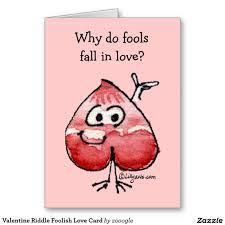
I fell in love with a project I'd expected to be easier, one I'd considered for months: a round table discussion, on a controversial topic, featuring 6 outstanding authors. Now, as a writer, my skill set is said to be sound. And I have enjoyed some success as an interviewer. But as a project organizer? Life handed me a big sign reading:
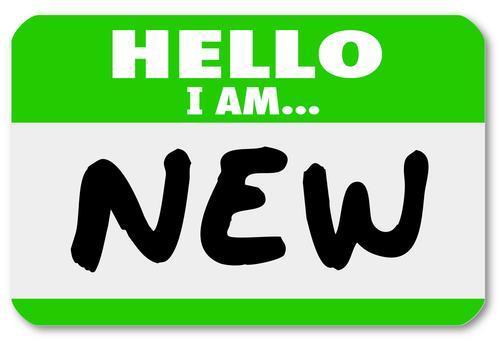
The challenges I faced were these:
1) Assembling the perfect group, one that would appeal to the widest range of readers: mystery, suspense, literary, fantasy...
2) Length: the original plan was ten questions, with each writer allowed 200 words for each. But, as you imagine, a 12,000 word forum would have been too much for almost any reader.
3) Staying on top of the production time line.
4) Creating the right format: one that would give writers room to really go wild with the questions...and readers an at-a-glance way to keep track of the authors and the questions.
5) Learning how to copy/paste six pages of responses into a handsome and unified blog.
and...
6) How to stay happily in love while facing these hurdles.
The first turned out to be easier than I'd anticipated. Through contacts I've made in a couple of years on Twitter and Authors Electric, I assembled the following lineup in a very short order of time:
[image error]
Russell Blake
Claude Bouchard
Bill Kirton
John A. A. Logan
Richard Monaco
Brad Strickland
Holding the number of knights down to 6 was a key step in controlling blog length. Still, what were we to do with those 12,000 words? The necessary goal remained: fullness, but with brevity.
[image error]
Solution: We'd still stick to ten questions--but divided into two parts. And, to give the knights ample room, I gave them the freedom to budget their replies. In other words, if one question really rang their bells and they needed 300 words, they could scale back on any other question--responding, e.g., in just 50-100 words. Their word count for all 5 questions could not exceed 1,000.
Okay, then: challenge 3.

Surprisingly, there was no problem at all. I'd expected the knights to need anywhere from a week to a month. Instead, they charged into battle! I received the first completed set of answers in one day--and the answers were thoughtful and deep. All the others beat the deadline too, leaving me plenty of room for two battles I needed to face on my own.
Battle the first:
[image error]
Battle the second:
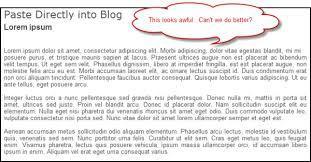
Between these two battles, I found myself strapped to remember my sweet giddy love for this project while I rolled in the gore and grue of my mistakes. Luckily, I'd learned to Save--even going so far as to create a backup version--for one day I deleted everything I'd done. Formatting: I toyed with different fonts, type sizes, colors, even spacing between replies and questions. Copy/paste worked simply fine with five of the six knights' replies. For the sixth, no matter I did, the screen showed great blocks of white space. Cheerfully, more or less, I retyped his answers--naturally ending up with typos that I had created. Proofing and more proofing.
But this isn't a sorrowful story. It's still a story of falling in love, and staying in love, when the going gets a little rough--and you can't write your weekly blog.
I loved every minute of the adventure I've had with these six remarkable writers. And I'm looking forward to doing the second part, if they're still game. I like these words and live by them:
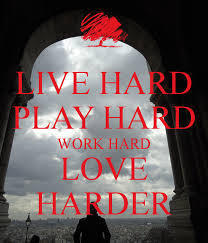
Mark the following date on your calendars, please.
What: BLOOD AND RUE: A RIPSNORTING ROUND TABLE CHAT
When: March 31
Where: You'd better believe it'll be right here!
Published on March 28, 2015 12:00
March 18, 2015
On One-Way Quick Critiques and Rude Questions
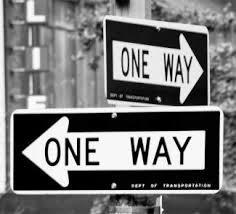
A new craze is sweeping the nation: the One-Way Quick Critique. This is anything but an attempt to engage; in fact, many QCs thus cut off your defense: 'This conversation is over.' Shut up and take it or get up and go. Here are a few of the common QCs:
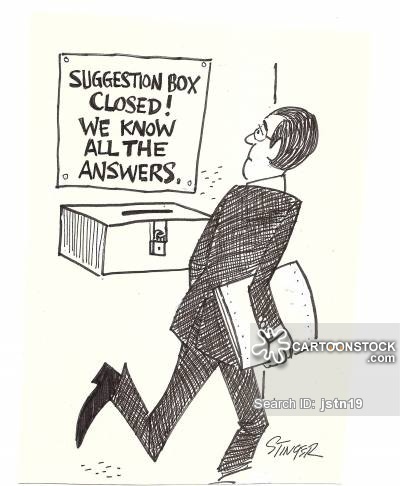
1) Someone who aspires to become a true Serious Writer feels free to take a quick shot at your books...though she has no plans to read them.
2) Some point out your flaws as a sibling, son or daughter but will hear no mention of their own family wrongs.
3) Those whose own lives are blameless claim that you're over-defensive when they're simply offering you help you don't want.
4) A coworker who spends 3 hours a shift on her cell phone quickly coaches you on ways you can simplify her job.
5) A slob spreading over three seats on a bus gives you hell if you forget to say 'Excuse me' when you belch. The only allowable answer is: 'I'm so sorry--I wish I were you!"
And so on and so on and so forth.
The One-Way Question is the QC's inbred country cousin, barging into the most private parts of your life.
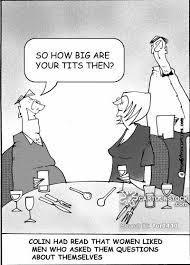
People, without thinking, ask the damnedest questions, . Usually ones they won't answer themselves:
1) How much money do you make?
2) How old are you?
3) How often do you have sex with your companion or spouse?
4) What are your best trade secrets?
5) What's the worst thing that you ever did?
6) Can you tell me a little more about that dreadful secret that's too painful to discuss?
7) Is your penis small or average?
8) Why don't you have a car/smart phone/gold-digging mistress/Rolex if you're really a good writer?
9) Could you connect me with your agent?
10) Has your age impacted the stoutness or length of your penis?
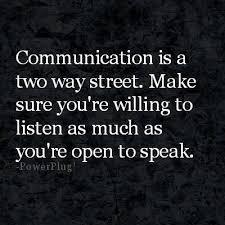
That maxim's good but it's only a start. We must also be prepared to put it in reverse: be as generous in speaking as you are greedy to hear. With the two sides kept in balance, we'll show more respect and steer clear of much grief.
Published on March 18, 2015 06:00
March 11, 2015
Hey, Where We At--Which Union Square?

Union Square, Manahattan
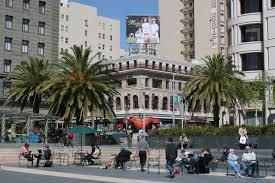
Union Square, San Francisco

Union Square, Seattle
Most writers are admirably clear about time, but too often unclear about place. Even in a story that has been set in Seattle, we need sometimes to reinforce the reader's sense of bearings. One mention of the city's name may not enough for a reader to place store names like Macy's or Bloomingdales in Seattle, not Manhattan. Furthermore, some landmarks may not be as well-known as we think: e.g., New York's Herald Square or Seattle's Pioneer Square.
Occasional reminders can be placed discreetly: The downtown Macy's is only blocks from 3rd and Pike, the crossing known as The Scourge of Seattle. Or: New York's flagship Macy's, located at Herald Square...
If this seems over-finicky, remember that anything causing a reader to stop and wonder where s/he is will slow down the momentum we've worked so hard to create.
The problem grows more pressing, if our hero--born in New York, now residing in Seattle and just back from San Francisco--finds himself thinking about Union Square.
Even in fantasy novels, I often need more grounding: how far away from 'the city' is the countryside now being shown?
[image error]
We don't have to choose, as writers, between speed and clarity. Take the time to add the necessary telling detail. The clearer we are, the more quickly and happily readers will read.
Published on March 11, 2015 05:30
February 24, 2015
You're In My Book--Or Are You?
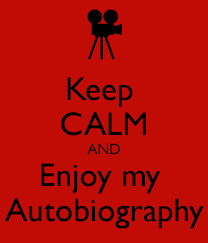
I had a friend, Ishmar, who kept seeing himself in novels I wrote. If a character was anywhere near Ishmar's height or was a different size and weight but had a similar job...If the character had been born in Tulsa, where Ishmar had once stopped to change flights...If I set a very short scene in his town, blocks from where he lived because I liked the area...Well! Any one of these things could lead Ishmar to feel that he'd been personally attacked. Worse still, the jab had been cravenly hidden under 'the thin veil of fiction'.
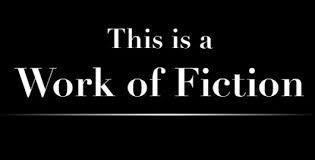
The very nature of fiction is misunderstood more often than many of us think. When I worked at Oxford Books in Atlanta, successful, intelligent women and men would display total confusion when asking for books they'd heard something about. Fiction or nonfiction? Confidently: nonfiction: a book about a revolution on the red planet Mars, between the Xanths and the Pleiades. Or, with equal confidence: fiction: the new life story of Willie Nelson. You can laugh, but these stories are no more absurd than the temptation to read ourselves too quickly into novels that we read.
Now, there's no shortage of charts showing ways to create characters.
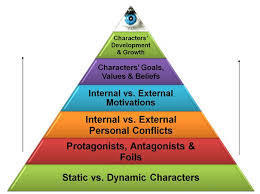
But whether we've begun to write or read a book, we must keep one fact in mind:
[image error]
Writers shuffle. Writers synthesize. Writers draw on everywhere they've been and all they've seen. Writers reconfigure qualities and histories, virtues and flaws, of the private pantheon of people whom they've known. And from these shufflings, synthesizings, draws and reconfigurations are born fictional characters who seem as real as we are.
No doubt, some hatchet jobs are done under 'the thin veil of fiction'. Far more often, I would think, lazy writers write their characters with movie stars in mind, liberally seasoning with bits of private history. But writers who are serious about their work and their readers, start with the hard work all real writers do:ShufflingSynthesizingDrawingReconfiguring.
And they go at this in the only proper spirit for a writer: Damn the torpedoes and...
[image error]
Published on February 24, 2015 06:00
February 18, 2015
The Dirty Bastards are Back Again!

With those six words began one of Time Magazine's all-time ten top family feuds. Six words said to mean one thing but heard to mean another.
Back story: Rudolph and Adolph (Adi) Dassler, committed Nazis and partners in a shoe company, became rivals after WW II. A growing rift between them had reached a breaking point. Cause: after an Allied bomb attack, Adi and his wife entered a bomb shelter, already occupied by Rudolf and his family. Adi cried, "The dirty bastards are back again," referring to the Allied war planes. But Rudolph heard instead a slam at him and his family.
The partnership dissolved. Rudolph and Adolph went on to found, respectively, Puma and Adidas. The two men never spoke again.
For a more detailed account of the rivalry and split, check out the following story:
http://tinyurl.com/q3o58lv
No doubt, stranger things have happened than a pair of Nazis creating the world's most beloved running shoes after a nuclear fallout resulting from six words.
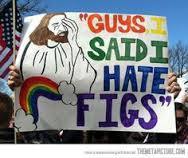
Surely, things at least as strange happen daily round the world. Friendships and partnerships end up with stakes through their hearts because of words meant in an innocent way. I once lost a close online friend because I'd misread her Tweet and responded playfully...then apologized, admitting that I'd read too quickly because I was so swamped. To her, this meant I didn't care. And the damage was never undone. I could tell of other losses over words never meant in an unloving way.
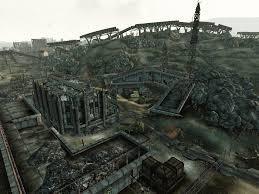
But let's return to the dueling Dasslers. I have a growing conviction that most eruptions are really excuses disguised as moral indignation. Deeply buried rancor may have been festering for years. The real issues, suppressed for so long, have grown too painful or complex for words. So the beginning of a feud is usually the ending of a sense of bondage--not to the 'offender' but to the bubbling venom inside.
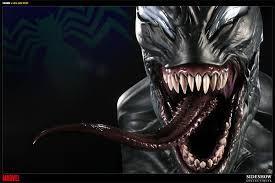
God knows, we're well rid of it, whatever the cost. But we're far better rid of it if we can skip all pretense and cut to the heart of our issues. There are ways to do this with far less risk of fallout. If we resist the urge, for instance, to lash out with a list of indictments and make our feelings known instead...Well, something constructive might come out of thaqt.
Accusations breed more accusations; charges, counter-charges.
But, as a wise doctor said:
[image error]
Published on February 18, 2015 05:30
February 13, 2015
Do the hard thing as if it were easy...
...and do the easy thing as if it were hard.
I still remember that maxim from Miyamoto Musashi's classic text for samurais: The Book of Five Rings.
[image error]
The tiny book's a gold mine of pithy lines like that. But that is the line that came back to me this week as I began the most difficult task to tackle so far in Seattle:
Yes, finding a new job.
[image error]
After five years of working third shift in Charlotte, the reduced hours and better schedule in Seattle seemed celestial. But the tradeoff proved a grim one, for the neighborhood is hell, running wild with thieves, drunks, druggies and dealers. Still, I decided to wait until after New Year's Eve. Then, before I knew it, I'd spent the month of January tackling all of my goals except this. I'd done nothing but put notes in my planner: Revise resume! Start looking!
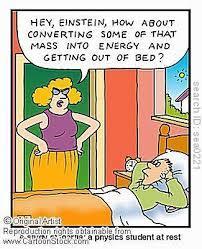
Oh, I could've blamed my dogging it on any number of things: fear of rejection, uncertainty of where to apply, reluctance to lose my job benefits after five years...and so on, ad nauseam. But the main thing, I realized, was that I'd gotten into the habit of seeing myself where I was. This seemed to be my lot in life. Besides, hell only lasted for three days a week.
But...
Do the hard thing as if it were easy...My brain shifted to Musashi mode.
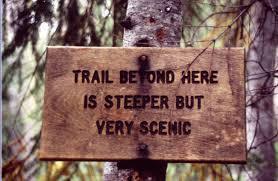
Step one: to the library, where I forced myself to sit till I'd completed the first new version of my resume--this one geared to retail. Then I printed this to make copies on high-quality paper for in-store visits next week.
Step two: Printed out an application for a store that interests me, completed application and set it aside for a visit next week. They like to meet their applicants and that rings my bells.
Step three: Bought a couple of last accessories for my new shaving regimen and decided on pants and shirt for personal visits.
Step four: Completed one on-line application and one in-store kiosk application for two stores that might be of interest.
Step five: Since I'm out to find more than simply any new job, I decided to gamble at this point on my applications. I listed available hours as a part-time applicant--ruling out Friday through Sunday in two cases, Saturday and Sunday on the third.
Step six: While ruling little out, I began to focus hard on what I want and what I have to offer...not on who will have me and what they say they require.
I'm prepared for setbacks and rejection. But I'm also completely committed to raising the bar with employment...by taking whatever tough steps I must take--as if they were child's play.
[image error]
I still remember that maxim from Miyamoto Musashi's classic text for samurais: The Book of Five Rings.
[image error]
The tiny book's a gold mine of pithy lines like that. But that is the line that came back to me this week as I began the most difficult task to tackle so far in Seattle:
Yes, finding a new job.
[image error]
After five years of working third shift in Charlotte, the reduced hours and better schedule in Seattle seemed celestial. But the tradeoff proved a grim one, for the neighborhood is hell, running wild with thieves, drunks, druggies and dealers. Still, I decided to wait until after New Year's Eve. Then, before I knew it, I'd spent the month of January tackling all of my goals except this. I'd done nothing but put notes in my planner: Revise resume! Start looking!

Oh, I could've blamed my dogging it on any number of things: fear of rejection, uncertainty of where to apply, reluctance to lose my job benefits after five years...and so on, ad nauseam. But the main thing, I realized, was that I'd gotten into the habit of seeing myself where I was. This seemed to be my lot in life. Besides, hell only lasted for three days a week.
But...
Do the hard thing as if it were easy...My brain shifted to Musashi mode.

Step one: to the library, where I forced myself to sit till I'd completed the first new version of my resume--this one geared to retail. Then I printed this to make copies on high-quality paper for in-store visits next week.
Step two: Printed out an application for a store that interests me, completed application and set it aside for a visit next week. They like to meet their applicants and that rings my bells.
Step three: Bought a couple of last accessories for my new shaving regimen and decided on pants and shirt for personal visits.
Step four: Completed one on-line application and one in-store kiosk application for two stores that might be of interest.
Step five: Since I'm out to find more than simply any new job, I decided to gamble at this point on my applications. I listed available hours as a part-time applicant--ruling out Friday through Sunday in two cases, Saturday and Sunday on the third.
Step six: While ruling little out, I began to focus hard on what I want and what I have to offer...not on who will have me and what they say they require.
I'm prepared for setbacks and rejection. But I'm also completely committed to raising the bar with employment...by taking whatever tough steps I must take--as if they were child's play.
[image error]
Published on February 13, 2015 06:40



